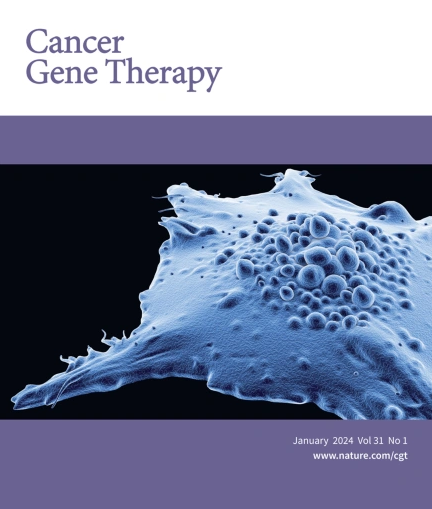Therapeutic potential of synthetic microRNA mimics based on the miR-15/107 consensus sequence
IF 5
3区 医学
Q1 BIOTECHNOLOGY & APPLIED MICROBIOLOGY
引用次数: 0
Abstract
MicroRNA expression is frequently suppressed in cancer, and previously we demonstrated coordinate downregulation of multiple related microRNAs of the miR-15/107 group in malignant pleural mesothelioma (PM). From an alignment of the miR-15 family and the related miR-103/107, we derived a consensus sequence and used this to generate synthetic mimics. The synthetic mimics displayed tumour suppressor activity in PM cells in vitro, which was greater than that of a mimic based on the native miR-16 sequence. These mimics were also growth inhibitory in cells from non-small cell lung (NSCLC), prostate, breast and colorectal cancer, and sensitised all cell lines to the chemotherapeutic drug gemcitabine. The increased activity corresponded to enhanced inhibition of the expression of target genes and was associated with an increase in predicted binding to target sites, and proteomic analysis revealed a strong effect on proteins involved in RNA and DNA processes. Applying the novel consensus mimics to xenograft models of PM and NSCLC in vivo using EGFR-targeted nanocells loaded with mimic led to tumour growth inhibition. These results suggest that mimics based on the consensus sequence of the miR-15/107 group have therapeutic potential in a range of cancer types.

基于miR-15/107共识序列的合成microRNA模拟物的治疗潜力。
MicroRNA的表达在癌症中经常被抑制,之前我们证明了miR-15/107组在恶性胸膜间皮瘤(PM)中多个相关MicroRNA的协同下调。从miR-15家族和相关的miR-103/107的比对中,我们得出了一个一致的序列,并用它来生成合成的模拟物。合成的模拟物在体外的PM细胞中显示出肿瘤抑制活性,这比基于天然miR-16序列的模拟物更强。这些模拟物在非小细胞肺(NSCLC)、前列腺癌、乳腺癌和结直肠癌细胞中也具有生长抑制作用,并使所有细胞系对化疗药物吉西他滨敏感。增加的活性对应于增强抑制靶基因的表达,并与预测结合到靶位点的增加有关,蛋白质组学分析显示对参与RNA和DNA过程的蛋白质有很强的影响。将新的共识模拟物应用于PM和NSCLC的异种移植模型,使用egfr靶向纳米细胞负载模拟物导致肿瘤生长抑制。这些结果表明,基于miR-15/107组共识序列的模拟物在一系列癌症类型中具有治疗潜力。
本文章由计算机程序翻译,如有差异,请以英文原文为准。
求助全文
约1分钟内获得全文
求助全文
来源期刊

Cancer gene therapy
医学-生物工程与应用微生物
CiteScore
10.20
自引率
0.00%
发文量
150
审稿时长
4-8 weeks
期刊介绍:
Cancer Gene Therapy is the essential gene and cellular therapy resource for cancer researchers and clinicians, keeping readers up to date with the latest developments in gene and cellular therapies for cancer. The journal publishes original laboratory and clinical research papers, case reports and review articles. Publication topics include RNAi approaches, drug resistance, hematopoietic progenitor cell gene transfer, cancer stem cells, cellular therapies, homologous recombination, ribozyme technology, antisense technology, tumor immunotherapy and tumor suppressors, translational research, cancer therapy, gene delivery systems (viral and non-viral), anti-gene therapy (antisense, siRNA & ribozymes), apoptosis; mechanisms and therapies, vaccine development, immunology and immunotherapy, DNA synthesis and repair.
Cancer Gene Therapy publishes the results of laboratory investigations, preclinical studies, and clinical trials in the field of gene transfer/gene therapy and cellular therapies as applied to cancer research. Types of articles published include original research articles; case reports; brief communications; review articles in the main fields of drug resistance/sensitivity, gene therapy, cellular therapy, tumor suppressor and anti-oncogene therapy, cytokine/tumor immunotherapy, etc.; industry perspectives; and letters to the editor.
 求助内容:
求助内容: 应助结果提醒方式:
应助结果提醒方式:


